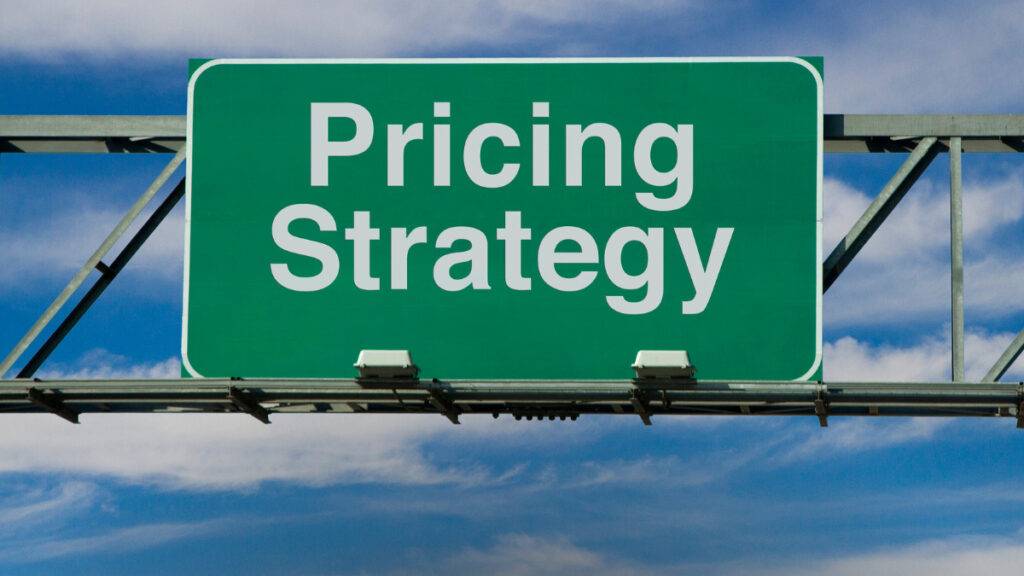Every business needs to refine its marketing strategies to ensure more sales and consequently achieve more earnings. Given the high competitiveness of the current days and the consecutive economic difficulties that the country is experiencing, developing good sales strategies is absolutely essential.
One of the best ways to perfect your sales is by investing in advanced technology. Technology has been a great ally of man in practically all his activities. Thus, we see technology applied in health, education, and commerce. It’s no different when it comes to leverage your business!
Check out 7 ways to take advantage of technology in sales and bill more!
1. New ways of contacting the customer
First of all, it is valid to explore new ways of customer contact offered by sales-oriented technology. Media reached a degree of compaction and efficiency that previously existed only in futuristic representations.
Among the forms of communication, notably digital media such as Facebook, Twitter and Linkedin stand out. Facebook enables strong integration between people and groups by sending messages, photos, audios, and videos, exchanging comments, creating communities and sharing various publications.
It is a vast field to be explored by companies and vendors.
In general, all social networks have these characteristics, although each platform has its own peculiarities. Linkedin, for example, is a social network focused on the relationship and exchange of contacts between professionals. Instagram prioritizes the publication of short images and videos. WhatsApp makes it possible to send messages, photos, videos, offers, among other solutions.
It’s up to the sales manager and his team to outline the best strategies to use these features in the best way for your business. Email is still a good tool to start and keep in touch with the public. You can send an email to the customer at any time. With Skype, you can communicate with the customer in real time, view and listen to him, exchange ideas and present your proposal.
SMS is another way to keep in touch with the customer by sending offers and making your ad. Mobile devices come with more news and features, and may have a variety of applications, including sales tools, that optimize the company’s contact with field vendors and customers.
To improve customer contact through social networks, blogs, websites, platforms, and other channels, the sales manager must invest in quality content, always receiving and passing feedback. Feedback is a way to always keep the interaction with the consumer alive. Content should involve tips, approaches, news, attractive photos, interesting videos, and so on.
2. Marketing Automation
The concept of marketing automation allows companies to increase demand for the sales industry without having to allocate too many resources or invest much human potential. Among these forms of automation are:
– E-mail marketing (sending advertising emails to different people);
– Construction of web pages;
– Automation of contact strips;
– Scheduling posts on social networks.
The contact rule is the maintenance of the contact with your client, regardless of the relationship phase in which he meets the company. In this way, the customer will always remember the products, services, and brand of the company, stimulating the conversions in sales.
Every strategy that aims to maintain the active relationship with the client can be called a “contact rule”. As an example, we can mention the automatic triggering of an email that sends a welcome message to the customer after he has signed the company newsletter or sent a thank-you message after a purchase is successful. The contact strip may involve:
– Message after registration;
– Communication while the sales process is in place;
– After-sales relationship;
– Sales motivation for shopping carts that have been abandoned or left unfinished;
In order to properly carry out marketing automation, the manager must align between sales and marketing, that is, integrate as closely as possible the teams responsible for each operation. Both should share goals, strategies, qualification criteria of potential customers and market segments.
With the automation of marketing, companies enable their campaigns and communications to be perfectly scalable and personalized (taking advantage of a platform that allows them to customize the content and communications for each target), regardless of the channels that potential customers use.
By mapping and automating the correct delivery of messages on timely occasions and through the right channels, the company delivers a unique experience to potential customers captured by the campaigns.
An advantage of marketing automation is that messages are automatically sent to customers as they progress through the qualification stages.
According to research by Gleanster Research, marketing automation, which allows for better management and targeting of leads (ie consumers who are interested in the company’s products), can lead to a revenue increase of up to 10% among the first 6 and 9 months.
3. Selling in the cloud
Another trend that needs to be considered and applied by the manager is selling in the cloud.
Many people believe that cloud computing is the work environment of the future. That is how e-commerce came about. Most young people make purchases through the virtual world.
So having a virtual store is a good solution to get more sales by expanding the reach of the physical store. For those who maintain both physical commerce and electronic commerce, it is fundamental to integrate the two so that, accessing one or the other, the customer always has the best service.
Online sales have become commonplace today. They offer many advantages, such as flexible scheduling and convenience for shopping, as the customer can access an online store at any time and from anywhere.
Another good advantage refers to the payment methods: the customer can print the ticket or make payment automatically via card or, in some cases, using the bank transfer (direct or mediated, such as payments via PayPal).
Online commerce has reached a very high level of success among consumers. It is possible, with your job, to make purchases beyond the national level. Through the internet, international stores also become accessible.
Many modern entrepreneurs begin their business through e-commerce. To sell on the internet, there is not so much bureaucracy, although the growing demand for this type of trade is already requiring its own legislation.
For those who already have a physical store, opening a virtual store is not something from another world. The selling facilities in the cloud are so many that today it is possible to create a store even for those who do not own a page of their own. There are also virtual shopping malls, which add to numerous stores and enable marketers to reach a wider range of consumers.
Sites such as the Free Market also give opportunities to both individuals and corporations, allowing stores to integrate with each other and consumers also participate in the process dynamically.
Customers can be part of the system by choosing what they want by comparing offers between different sellers, selecting the best payment option, qualifying the seller and evaluating the purchase and the product. It is, therefore, possible to make a safe and satisfactory purchase without leaving home.
The seller can also positively or negatively review the buyer (if, for example, he fails to make payment for a purchase made). The offending buyer can be excluded from the Free Market, being prevented from carrying out other transactions.
The sale-in-the-cloud has been expanding and providing new possibilities for companies of any segment. Some applications already allow the user of the computer or mobile device to view offers even offline.
In short, selling in the cloud offers advantages to the company such as:
– Reaching a larger and more diverse audience;
– Use of diverse tools to advertise their products (stores, social networks, virtual malls, marketplaces, collective sale platforms, among others) ;
– Active ads 24 hours a day (ads often appear whenever consumers access a site, many of them appear on the side or bottom bars listing offers and rebates on products that the customer has occasionally searched for);
– Free advertising;
– Less bureaucracy;
– More convenience and ease of access to the customer;
– More chances of varying pricing.
- ERPs
ERPs are automated systems that integrate different sectors of the company, streamline operations, improve the flow of information, generate detailed reports and facilitate decision making by the manager. Generally, ERPs are sold in separate modules, one of which corresponds to sales.
In any case, all the modules must work integrated, and the information of one must be passed on to the other departments. Thus, the sales industry must be well integrated with financial and inventory control to optimize business management.
With a good ERP, the manager can control his sales, measure the performance of the sales team, compare monthly sales results, calculate the demand for certain products to be always attentive to the stock replacement/elimination, define better strategies and goals of sales.
In the beginning, ERPs could only be used when installed on the computer, but today there are mobile and cloud sales systems for user convenience.
A sales ERP has the following functionalities:
– Registration of orders;
– Sending the request of orders by email to the client;
– Integration with e-commerce;
– Integration with financial, inventory and invoice issuance systems;
– Price tables;
– Customer database;
– Commissions from sellers.
– A mobile or cloud ERP provides more flexibility of use and access to information as it can be used not only on computers but notebooks, smartphones and mobile devices in general.
5. CRM Systems
CRM is an acronym for Customer Relationship Management. The function is exactly this: to maximize the level of relationship of the company with its client. With CRM software, the manager can put the customer as the focus of their operations, valuing it enough to ensure good service and achieve more sales.
Consider that you are a clothing retailer, but you do not have CRM technology. You sit in the store, waiting for the customer to appear, or check a person’s name and phone number on a calendar to make a call. Considering that you call someone, you may not have a satisfactory proposal to make. In this scenario, it is clear that sales will not happen so easily.
CRM software, in turn, enables the company to have all of its contacts registered, being able to categorize them into prospects (consumers you have surveyed), leads (consumers who have already contacted you information about your products) and customers who have already closed a deal with you. This facilitates your search and communication.
In CRM, you also have a tool that is being used more and more by the entrepreneurs: the sales funnel, presenting all phases of your sales, the path traveled by the consumer until the purchase.
CRM allows you to schedule all your activities, including visits to customers, schedules marked with a lead, completion of a sale already started and so on. The technology still provides reporting filters, valuable resources to make it easier to analyze sales progress and make better decisions.
With a CRM, you can also follow a fundamental step in a sales process: after-sales. The relationship of the company with the customer does not end after he made his first purchase – on the contrary, this was only the beginning.
Do not be afraid to become friends with your client, thinking that this will bring some kind of disadvantage (considering that the customer will only take advantage of your relationship). In fact, the customer friend can recommend your company to other people and continue driving growth. Therefore, it is important to know what the customer thought of the purchase, whether he is using or made use of the merchandise.
Finally, the CRM allows the manager to get to know his clients and their needs more deeply, thus ensuring the offer of products and services that meet his expectations.
In general, CRM is divided into three parts:
Operational: The search of the channels of relationship, seeking especially to develop sales channels;
Analytical: From the analysis of data and information, so that the data becomes knowledge for the creation of businesses (identification of customer preferences from monitoring their habits);
Collaborative: the acquisition of customer value, based on knowledge and interaction with the client.
CRM allows complete interaction with the customer through knowledge of their habits, the creation of events and the development of well-targeted campaigns and promotions, personalizing the service and facilitating the possibilities of the customer becoming loyal.
In this way, CRM is one of the most important allies in expanding a company’s sales.
6. Results, results and more results
Measuring results is one of the best strategies to evaluate the performance of your sales team in order to identify errors and solutions. When you measure the number of sales made during a month, you are actually measuring results. However, scaling results goes beyond that.
The sales funnel, for example, when it is very detailed, favors the analysis of the manager, since he can see the number of contacts that were delivered by the marketing and how many of those contacts were following the expected path, converting at each stage.
For those who use digital marketing, it is possible to access the number of visits your blog had, how many of those hits came from social networks, how many clicks on links were given, how many comments were made, how many shares a particular post suffered, among other data of this kind.
There are several ways to measure results, and using certain applications and software allows you to view important metrics, such as those cited above. From the evaluation of these results, you can plan, analyze other data and correct everything that is wrong in the sales operations, keeping what has positive results.
The Average Ticket indicates the amount spent by customers, on average, with the products and services of your company. It is possible to do this calculation automatically, and some management systems may even offer it: total received / sales number = average ticket.
If this value is considered low, the manager must work on strategies to increase average consumption and, consequently, profitability, offering more services, crossing sales, stimulating the exchange for better products, etc.
The Follow Up Rate measures the number of new contacts the company makes with the same customer in order to maintain interest in a particular product or service. To do so, you should analyze the response rates for each new contact.
The Conversion Rate, also called the Victory Rate, helps define how many opportunities are effectively turning into sales. With it, you can assess which vendors are most able to take advantage of your opportunities. Or even identify sellers who are adept at creating opportunities, but find it difficult to turn them into sales.
The New Customer Rate is another important performance indicator that helps identify which strategies work best, attracting more customers, which channels are most used by consumers, and which vendors have been able to reach the most customers in a given period of time.
7. Business Proposals
Finally, let’s talk about a very recent and quite innovative sales technology strategy. The Commercial Proposals software facilitates the writing and sending of commercial proposals and contracts (signatures and contracts), from the construction of those simple documents to those that require a more complex structure. Companies that adopt this solution get more efficiency and agility in the preparation of these documents.
The stages of the Commercial Proposals:
– Preparation of contracts and proposals;
– E-mailing;
– Online or paper subscription;
– Billing in ERP.
– In the seller dashboard, you can have a single view of all business proposals, contracts, membership terms or budgets. Thus, the manager retains control over all proposals that have been submitted. The software offers the following statuses:
– Sent;
– Display;
– Disapproved;
– Approved;
– Expired;
– Canceled.
Aware of the status of the proposal or contract, the manager will have the opportunity to analyze and make immediate decisions, reducing the sales cycle.
With just one click, the manager can edit, view, send, download PDF, cancel, revise clauses or clone contracts, proposals and budgets sent to the leads.
For the preparation of commercial proposals and contracts, the customer is registered, the commercial conditions, means of payment, forms of readjustment, effective and expiration dates are added, in addition to defining how the contract will be signed: paper or online.
In a second step, the services or products and the possible discounts are added. Then the summary of everything appears, the rescue is done and the proposal is sent – all in a few minutes.
The client receives the proposal or contract by e-mail, reads its content and decides whether to approve or disapprove it. Whatever the buyer’s decision, the seller receives notification by email.
A major advantage of the software is that it can be connected with the vendor’s favorite application or sales manager. Business Bids have connectors for the most important ERPs and CRMs on the market.
You can even create your template for business proposals, contracts, membership terms, and budgets. You can standardize and control all your changes.
If you are interested in DocSales’ sales technology solution, be sure to try out our free trial platform. This is the best way to try out your features and evaluate whether or not it meets your business needs. Try it!
Learn more about sales pipeline by clicking here.






